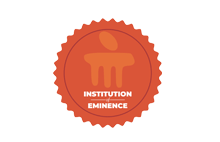Efficient internalization of nano architectured 177Lu-hyaluronic acid@ zirconium-based metal-organic framework for the treatment of neuroblastoma: Unravelling toxicity, stability, radiolabelling and bio-distribution
Document Type
Article
Publication Title
International Journal of Biological Macromolecules
Abstract
Zirconium-based metal-organic frameworks (UiO-66) have gained considerable attention owing to their versatile application. In the present research, UiO-66 was synthesized via a defect engineering approach, and its toxicity profile was explored. The synthesized nanomaterial was extensively characterized via spectroscopic methods such as FTIR and Raman spectroscopy, which confirmed the formation of the framework. X-ray diffraction (XRD) and transmission electron microscopy (TEM) were used to determine the crystallinity, shape and size of the nanoformulations. Thermal gravimetric analysis, 1H NMR spectroscopy and Brunauer–Emmett–Teller (BET) surface area analysis were used to identify the differences between pristine and defective UiO-66. Furthermore, the synthesized MOF was exposed to various pH conditions, serum protein and DMEM. Drug loading and release studies were evaluated using 5-fluorouracil as a model anticancer drug. The synthesized MOFs were modified with hyaluronic acid via mussel-inspired polymerization to increase their uptake and stability. More importantly, the toxicity of the nanoformulation was investigated via various toxicity studies, such as hemolysis assays and cell viability assays, and was further supported by in vivo acute and subacute toxicity data obtained from Wistar rats. Radiolabelling and bio-distribution studies were also performed using 177Lu to explore the bio-distribution profile of UiO-66.
DOI
10.1016/j.ijbiomac.2024.134381
Publication Date
10-1-2024
Recommended Citation
Kulkarni, Sanjay; Pandey, Abhijeet; Soman, Soji; and Nannuri, Shivanand H., "Efficient internalization of nano architectured 177Lu-hyaluronic acid@ zirconium-based metal-organic framework for the treatment of neuroblastoma: Unravelling toxicity, stability, radiolabelling and bio-distribution" (2024). Open Access archive. 10008.
https://impressions.manipal.edu/open-access-archive/10008


